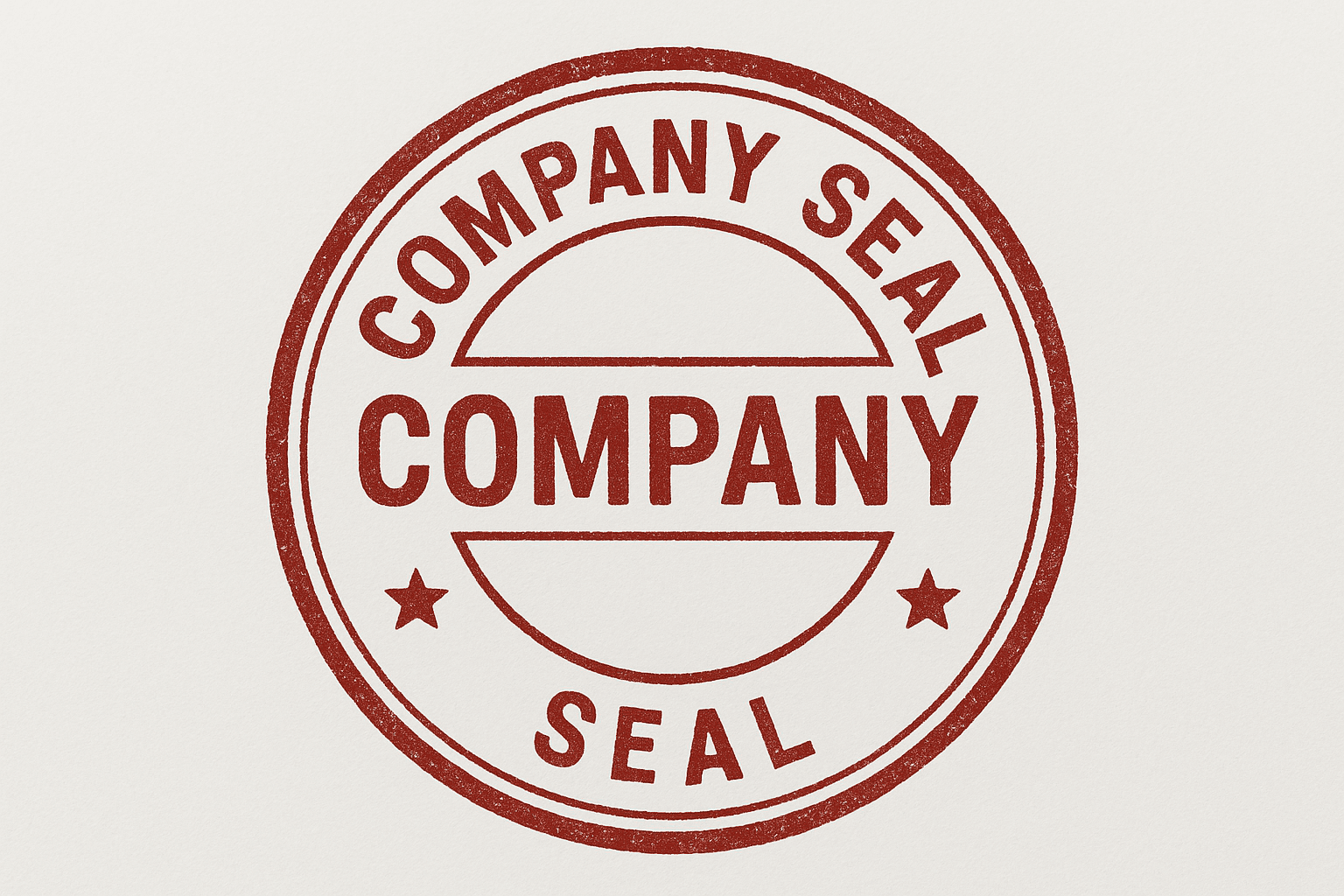WhatsApp or email with our sales team or get in touch with a business development professional in your region.
Why eSignGlobal Does Not Offer a Company Seal Template and Requires Users to Upload Their Own Seal Image





Key Takeaway
Seal culture and legal frameworks overseas differ fundamentally from China: most countries do not mandate a corporate seal, and there is no unified seal standard. Therefore, eSignGlobal does not provide a “template seal.” Instead, users upload their own legitimate seal image to respect local practices, avoid misleading use, and reduce compliance risks.

Reason 1: Most Countries Do Not Have a Mandatory “Company Seal” Regime
Different Basis for Contract Validity
- Across Europe, North America, Southeast Asia, and Oceania, a company seal is generally not legally required.
- Contract validity turns on the signer’s verified identity and intent, not on whether a seal is affixed.
- A duly authorized handwritten or electronic signature typically carries the same effect as “stamping a corporate seal” in China.
- Example: In the US, UK, Canada, and Singapore, once an authorized representative signs electronically, it is treated as a corporate act without any seal.
Reason 2: No Unified Seal Standard Overseas and No Mandatory Legal Force
Company Seals May Exist But Are Not Compulsory
- Even where a “Company Seal” exists, it often features:
- No unified design standard (self-made or commissioned);
- No state-backed legal authority;
- Decorative or traditional use in contracts.
- Hence, generating a platform “template seal” cannot represent any official or legally meaningful mark.
Typical Examples
- United Kingdom: companies may self-make a seal; usage is entirely voluntary.
- Japan: “representative seals” still exist, but e-signatures have replaced many stamping scenarios.
- Australia, the US, and EU members: seals are rarely required.
Jurisdictions With Mandatory Seals and Unified Formats (or Similar Regimes)
Such jurisdictions are rare globally and are mainly found in parts of East and Southeast Asia.
Representative Regions and Traits
| Country/Region | Mandatory Seal | Unified Format | Notes |
|---|---|---|---|
| Mainland China | Yes | Yes | Clear regulatory and technical rules; organizations must engrave and register seals; national standard format. |
| Vietnam | Yes | Yes | Governed by statutory rules and registration; circular designs with company name and number; supervised production. |
| Laos | Yes | Yes | Police approval required; seals often display the state emblem and entity name. |
| North Korea | Yes | Yes | Strict central approval; similar to China. |
| Mongolia | Yes | Yes | Registration required; typically circular with national emblem. |
| Cambodia | Yes | Yes | Managed and registered by the Interior Ministry; includes state emblem. |
| Myanmar | Yes (some sectors) | Relatively unified | Registration common, but mandatory force and effect have weakened in practice. |
Countries With Seal Practices but No Mandate and No Unified Design
Representative Countries and Trends
| Country | Mandatory | Design | Notes |
|---|---|---|---|
| Japan | No (being phased out) | Traditional representative seal, not unified | Government promotes “de-sealization”; e-signatures replace most use cases. |
| South Korea | No | Company-defined | Former corporate seal certificate regime; mandatory registration largely removed since 2020. |
| Russia | No | Self-made | Mandatory corporate seals abolished since 2015. |
| Thailand | No | Self-made | Seals optional; board signatures usually suffice. |
| Indonesia | Only certain documents | Self-made | “Materai” tax stamps used for some government/bank papers; corporate seals not mandatory. |
eSignGlobal’s Product Rationale and Compliance Considerations
Respect Local Practice
A single “template seal” risks misleading cross-jurisdictional use and creating compliance exposure.
Reduce Misuse and Legal Risk
Not shipping an “official-looking” template avoids any implication of state endorsement or mandatory force.
Enhance Authenticity and Traceability
If a company does use a longstanding seal style, uploading its real seal image aligns better with internal authorization and external audit expectations.
Align With Global E-Signature Norms
Overseas regimes emphasize identity verification and demonstrable intent. eSignGlobal provides multi-factor authentication, a compliant signing evidence chain, and audit logs to meet cross-border requirements.
How to Upload and Use Your Company Seal on eSignGlobal
Recommended Steps
- Prepare a high-resolution seal image (transparent PNG recommended).
- Complete company profile verification and admin authorization in your workspace.
- Upload the seal, set permissions, approval flow, and seal management rules.
- Place a “seal” placeholder in contract templates and initiate the process.
- Combine with signer verification, timestamps, and audit logs to form a complete evidentiary chain.
Summary
- Most countries do not mandate corporate seals and have no unified design;
- Contract validity hinges on verified identity and clear intent, not stamping;
- eSignGlobal avoids a one-size-fits-all template to respect local practice and compliance;
- Where a seal is needed, the platform supports “uploading your real seal + permissioned workflows,” combined with identity checks and audit evidence for cross-border compliance.

Shunfang
Head of Product Management at eSignGlobal, a seasoned leader with extensive international experience in the e-signature industry.
Follow me on LinkedIn
Get legally-binding eSignatures now!
30 days free fully feature trial
Business Email
Get Started
 Only business email allowed
Only business email allowed
Latest Articles
Scaling for 2030: Why your business needs DocuSign CLM today
DocuSign CLM: Simplifying the complex world of agreements
Why eSignGlobal is the ultimate alternative to DocuSign CLM
Using CLM to automate global privacy policy updates
DocuSign CLM vs ContractWorks: Which is better for small legal?
How to use CLM for automated subcontractor background checks
Why DocuSign CLM is essential for the future of hybrid work
Reducing document drafting errors with DocuSign CLM templates


